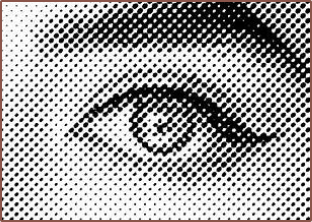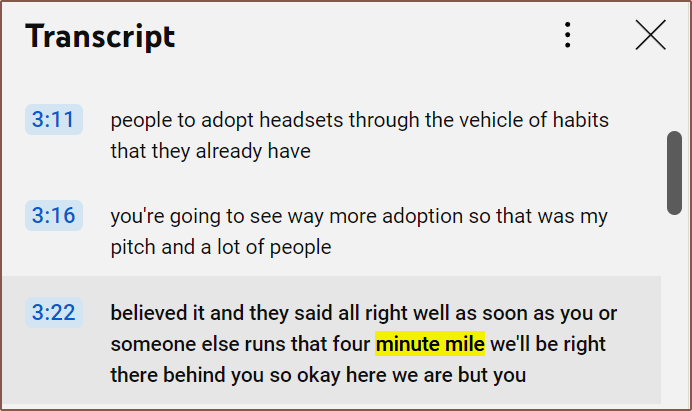One day at 3am, earlier in the week, I found out that the Rokid Max was on Amazon Prime, so I got them to further learn about HMDs. Here are my impressions of them so far:
- As expected, my IPD of 73 wasn't going to work with these glasses that are designed with a fixed IPD of 65. The left half of the left eye image is a smeary blur, and the same for the right half of the right eye.
- Combined, my brain does a decent job of using the eye that obtains the highest quality image to create a full image that is mostly full resolution.
- There's something called a prizm lens that can hardware-correct this, but it'll mean that the view of the real world will also be affected.
- I found out about this and a few other tips on Rokid's "Start User" collection of Reddit posts.
- The screen really hugs the edges of the frames, meaning that it's very easy for the sides to be cut off from view. It doesn't seem to help that the eyebox is small and so my eye moving from one side to the other could cut off something that was visible in my peripheral vision.
- I belive that the sub-pixel layout isn't RGB stripe, but a more triangular / hexagonal layout. This is because text doesn't look blocky-pixelated, but more like the dithering pattern of a 2D print if you zoomed up.
- The amount of digital desktop space feels low for the amount of visible area it takes up.
- This is somewhat expected as I usually work with a 2560x1440px screen, but I felt I could fit more on my 8" N100 laptop's 1280x800px screen than the Rokid Max's 1920x1200 resolution (activated by pressing the +Volume button for a few seconds).
- The shades are, understandably, dark. This is made more apparent due to the bright image of the screen.
- The end result is that my brain filters out all but light sources/reflections (similar to filtering out the reflections from glossy monitors/screens). Optical passthough feels non existent unless most of the view is black (like a screensaver).
- The actual shades also have a bit of a distortion to them. When I look at the same point (screen off) but move my head, the image of the real world slightly moves around a bit.
- Now I better understand KGonTech's blog posts, where he calculated (for the Nreal Airs) that the real-world light transmission is about 23%.
- All the above points so far combine to make the virtual display look to be approx 35.5cm * 21.5cm, 40cm away from my eye.
- Putting those numbers into the NVidia PPD calculator, it seems I'm not far off my rough estimates since the FOV is 48 horizontal and the Rokid Max is estimated by VRCompare to be 50 degrees diagonal. Rokid claims 50 degrees but isn't clear if this is horizontal or diagonal FOV.
- Unfortunately, this results in a PPD of 40, which is half the resolution I'd want. This was expected as, ever since I found out about the NReal (now XReal) Airs, I essentially paraphrased this modified quote: "As soon as you run that 4K [display] minute mile, I'll be right there behind you". (reference to what the Immersed CEO said in an interview)
- 41.9cm diagonal = 16.5" virtual 16:10.
- These measurements were also taken when I was looking down a 7 - 8m long room to try and improve the illusion of size.
- The minimum brightness setting is red-tinted (like a low blue light filter such as Night Light on Windows) and is still quite bright in low light situations.
- There is a single button that cycles from levels 6 -> 1 and then back to 6, so I guess the tint is also a reminder to not "discord light mode meme" yourself, thinking that you can reduce the brightness further.
- l noticed in Side By Side (SBS) mode (activated by holding the brightness button (2 seconds to stretch 1920x1080 across both eyes, 4 seconds to have native 3840x1080 for both eyes) that the 3D effect looks like sets of 2D planes, like a 3D version of Paper Mario.
- Maybe this has something to do with vergence and accomodation?
- I remember that the only thing that didn't have that effect was the view of a hallway.
- While a cool experience, I had thoughts like "This should've been standard over 10 years ago" and "I'm not really losing that much information if I close one eye see this in 2D" and "There's certainly more immersion".
- The Rokid Max supports a limited colour range when running at 120Hz. I can't notice this when playing Trackmania but I do when on desktop in the form of banding.
- What I did notice in Trackmania are crispy pixels. I would've thought that it would have been less noticable than text (which is of higher contrast). Perhaps there was some ingame anti-aliasing setting I was supposed to turn on.
- My nose doesn't like the weight of these glasses and so I have a tendency to look down so that the weight isn't on them. I can barely tolerate the weight of regular glasses, so this was expected. I'd certainly be looking for a solution that doesn't put any weight on my nose at all.
- The over-ear speakers are nice, in that it's nice to be able to have headphone-like audio without something compressing my head or covering my ears. Actual sound quality is not as crisp and defined as my £30 BT headphones, but if I'm not specifically trying to listen to something (eg just playing Trackmania or having a work music playlist in the background), I wouldn't notice for a while.
- The nose bridge attachment does take quite a tug to remove them (I opted to go with the smaller nose bridge in the box instead of the preinstalled one).
- Unfortunately, GingerXR doesn't currently support the Rokid Max in wired support so I wasn't able to try out any multi monitor setup.
 kelvinA
kelvinA


Discussions
Become a Hackaday.io Member
Create an account to leave a comment. Already have an account? Log In.